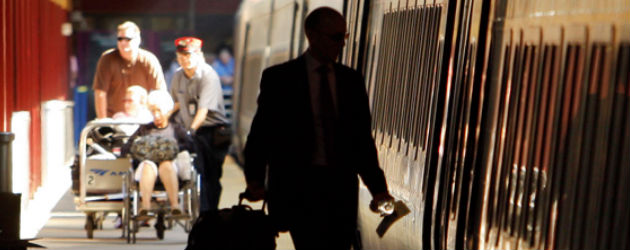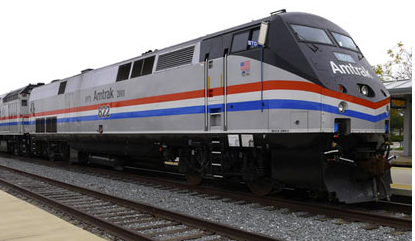Amtrak carried record passenger traffic in 2012
 Courtesy of Washington Post by Ashley Halsey III. Perhaps sparked by highway congestion or the hassle of air travel, Amtrak’s passenger rail service has been the nation’s fastest growing mode of transportation, according to a new report that urges Congress to push forward with a coordinated national rail plan.
Courtesy of Washington Post by Ashley Halsey III. Perhaps sparked by highway congestion or the hassle of air travel, Amtrak’s passenger rail service has been the nation’s fastest growing mode of transportation, according to a new report that urges Congress to push forward with a coordinated national rail plan.
The government-subsidized railway carried a record 31.2 million people last year, a 55 percent increase since 1997, according to a study by the Brookings Institution.
The study, released Friday, came a day after congressional leaders said they planned to craft a major funding reauthorization for railroads later this year.
Amtrak turns a profit on only four of its more than 40 routes, the study showed, all of them in the Northeast corridor, a shortcoming that raised the hackles of some Republicans in the last Congress.
 For more than a year, Rep. John L. Mica (R.-Fla.), then chairman of the House Transportation Committee, repeatedly called Amtrak a “Soviet-style railroad” before saying that it might be acceptable if it could turn a profit. He suggested selling off the Northeast corridor service to private firms.
For more than a year, Rep. John L. Mica (R.-Fla.), then chairman of the House Transportation Committee, repeatedly called Amtrak a “Soviet-style railroad” before saying that it might be acceptable if it could turn a profit. He suggested selling off the Northeast corridor service to private firms.
Mica’s successor as chair of the influential committee, Rep. Bill Shuster (R.-Pa.), struck a more conciliatory tone in a speech to state transportation officials Thursday.
“I think there’s a need for passenger rail in this country,” Shuster told the American Association of State Highway and Transportation Officials.
He said the Obama administration should narrow its plan to begin building a national high-speed rail system, focusing on the Northeast corridor first.
Washington ranks behind New York and ahead of Philadelphia as the second-busiest Amtrak hub city, and the four profitable routes in the system serve that corridor.
The Brookings study showed that nearly 90 percent of the ridership increase since 1997 has been trips of less than 400 miles, generating a positive operating balance of $47 million in 2011. Longer routes carried the rest of the passengers and lost $614 million, the study said. Amtrak receives a $1.5 billion federal subsidy each year.
Almost two-thirds of the rail line’s ridership came from 10 major metropolitan areas, all but Chicago on the East or West Coast. The study concluded that while continued federal support and development of a national rail plan were vital to Amtrak’s continued success, the rail line must build stronger alliances with freight rail companies that own much of the track on which it operates, and turn to state governments for greater support and innovative funding sources.
Category: General Update, Transit News










